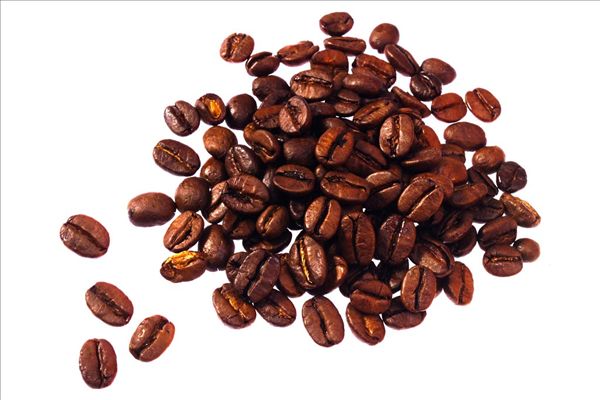The soft and sour taste of Peruvian coffee introduces the flavor of fine coffee beans in the manor.
As a rising star in the coffee world, Peruvian coffee is gradually opening up its popularity and entering the international market. Peruvian coffee has always been used as one of the blend beans for comprehensive coffee stability. Peruvian coffee tastes mellow and has the right acidity. This tepid coffee attitude has made more and more people like it.
Peru is located in the west of South America, with a coastline of 2254 kilometers. The Andes runs through the north and south, and the mountains account for 1/3 of the country's area. They belong to the tropical desert area and have a dry and mild climate. Peruvian coffee is mostly grown at the foot of the Andes, where it is rich in quality traditional Central American coffee beans.
Peru is a huge and diverse land area where they can produce a large variety of coffee beans, and Peru produces very good Peruvian coffee. Overall, the beans have a Central American sheen but are packaged with South American flavors. Quality organic grounds do have more of a rustic coffee flavor. As long as the beans keep adding flavor that interests people rather than weakening it. This cup of Peruvian coffee has all the brightness and depth of taste. When a cup of regular Peruvian coffee is in your hand, you don't have to try to taste whether it's good or not.
Peruvian coffee beans are most famous for coffee beans produced in Chancha Mayo in the middle and Cuzco in the south. In addition, there are also some areas in northern Peru that produce organic coffee. Organic coffee is made from beans grown in the shade. Although the method of growing coffee beans under shade makes the yield not high, the quality can reach the standard of gourmet coffee. This is because shade under trees slows the ripening of coffee trees, helps coffee to grow fully, makes it contain more natural ingredients, fosters better flavors, and reduces caffeine content.
Peru's coffee cultivation is planned, which greatly increases coffee production. Its rich acidity and mellow smoothness are its most striking features. Peruvian coffee has a mild acidity, medium texture, good taste and aroma, and is an indispensable ingredient in making mixed coffee. Excellent Peruvian coffee, rich aroma, smooth taste, structured, rich sweet, and contains elegant mild acidity, will quietly wake up your taste buds.
The difference between regular organic Peruvian coffee and high-quality organic Peruvian coffee is enormous: the cheaper beans are not only inferior in quality, but often have significant defects in the cup. Especially grassy, overfermented. Finding good Peruvian coffee beans takes a lot of effort to find among a large number of middlemen and other people who can buy them. But it also takes some hard work to pick out the sample beans. But that's better than slogging through piles of paperwork.

Important Notice :
前街咖啡 FrontStreet Coffee has moved to new addredd:
FrontStreet Coffee Address: 315,Donghua East Road,GuangZhou
Tel:020 38364473
- Prev

Taste characteristics of fermented thick civet coffee varieties introduction to the flavor of fine coffee beans in the manor
Civet Coffee (Kopi Luwak), native to Indonesia. It is one of the most expensive coffee in the world, with a price of several hundred dollars per pound. It is extracted from the feces of the civet and processed. The civet eats the ripe coffee fruit and is excreted through the digestive system. After it is fermented through the stomach, the coffee produced has a special taste and has become a grab in the international market.
- Next

Noble elegant and tender Cuban Crystal Mountain Coffee varieties taste characteristics Manor boutique coffee bean flavor introduction
In 1748, coffee was introduced into Cuba from Domiga, and Cuba began to grow coffee. With fertile land, humid climate and abundant Rain Water, Cuba can be called a natural treasure land for coffee cultivation. The suitable natural conditions provide a favorable natural environment for the growth of coffee trees, and coffee is well planted and developed here. In Cuba, the cultivation of coffee is regulated by the state. The best coffee in Cuba
Related
- Detailed explanation of Jadeite planting Land in Panamanian Jadeite Manor introduction to the grading system of Jadeite competitive bidding, Red bid, Green bid and Rose Summer
- Story of Coffee planting in Brenka region of Costa Rica Stonehenge Manor anaerobic heavy honey treatment of flavor mouth
- What's on the barrel of Blue Mountain Coffee beans?
- Can American coffee also pull flowers? How to use hot American style to pull out a good-looking pattern?
- Can you make a cold extract with coffee beans? What is the right proportion for cold-extracted coffee formula?
- Indonesian PWN Gold Mandrine Coffee Origin Features Flavor How to Chong? Mandolin coffee is American.
- A brief introduction to the flavor characteristics of Brazilian yellow bourbon coffee beans
- What is the effect of different water quality on the flavor of cold-extracted coffee? What kind of water is best for brewing coffee?
- Why do you think of Rose Summer whenever you mention Panamanian coffee?
- Introduction to the characteristics of authentic blue mountain coffee bean producing areas? What is the CIB Coffee Authority in Jamaica?

